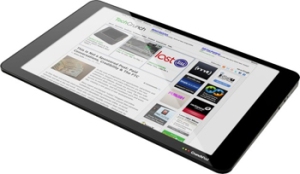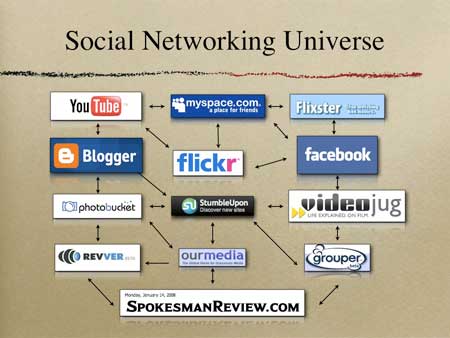The old business model of newspapers is toast. We all know it. Its just some can’t quite fathom it yet. You see it daily at most newspapers–where classified, real estate and auto advertising has been sucked in to the black hole of the Internet. In response, massive cost cutting and layoffs have created print publications that are shells of their former selves.
For years, newspaper industry bloggers have been documenting this ongoing tragedy–one layoff announcement after another. They have debated incessantly who’s to blame, where the future of journalism is going and who will be left to pick up the pieces. The hand wringing has been intense. I admit my sweaty palms have been there with the best of them.
Stepping away from the scrum, I am starting to see the big picture of where the future of digital journalism is heading.
I consider myself a keen people observer. I used to love sitting in a coffee shop and watch how somebody read the newspaper. How long did they look at my front-page photo? What? Only three seconds! Damn.
Lately, I’m not seeing many people reading newspapers in coffee shops or anywhere else for that matter. What I am seeing, is the screenager generation–now grown up—typing into their cell phones, texting incessantly to “friends.” Look around you. Go to anyplace where there are a lot of people. How many have a phone to their ear, or are walking and texting? Cell phones have become a necessity of life now. The handset makers are all too aware of this. Feature creep is accelerating. As cell phones grow smarter, users are fawning all over the new technology.
Smartphone sales have gone white hot. iPhones, Palm Pre’s and Android devices with the added value of applications and web browsers are changing how we use our cell phones.
I am a recent convert to the iPhone 3GS. Where on most days I wanted to throw my old Palm Treo against a brick wall, I now enjoy using my iPhone. It is not just a phone to me; it is a place where I get most of my news. I check my twitter feed application constantly. If there is breaking news in my community, I will know it. I have a dozen mobile news apps—AP, USA Today, BBC, New York Times, etc. My iPhone has become my connection with what’s going on in the world—and it’s all in my pocket.
How we get our news is changing. It’s subtle, but it is happening. News consumers are slowly turning away from print and TV and are now moving toward web enabled mobile devices. The smart phone is only the start. Amazon’s Kindle reader is the forerunner to future tablet web devices. These touch enabled tablets could seal the deal by forcing print journalism to go mostly digital.
Some cool prototypes have been making the rounds. But the rumor of the mythical Apple tablet is what makes me wonder if this will be the disruptive technology that sends print newspapers down the black hole for good.
Stay with me here. I had some time to kill at a photo assignment yesterday. For an hour I browsed the Internet on my iPhone. My 47-year-old eyes struggled to read the text. If only my iPhone was 2 or 3 times the size. I would be able the browse with out squinting. A touch enabled tablet, with an unlimited data plan would allow me to view text, multimedia and video in ways the smart phone struggles with today. I think of the applications of a tablet for photojournalists. Being able to download photos from their cameras to a tablet, then quickly tone, caption and send them back to the newspaper would be great. Having to lug a laptop in the field is true pain. This is a market segment that is only getting started. It has the strong potential to disrupt not only newspapers, but magazines as well.
Consumers, if they embrace these new touch-tablets, will have their news pushed to them at lightening speed. They will be connected to everyone and everything. They will choose how to shape their digital lives by deciding what news feeds and publications to subscribe to.
So where does that leave present day print journalism? It will soon be vastly different than it is today. Where mainstream media outlets have shed their most talented people, those same workers are going to be the ones that will build the new journalism of the future. My guess is that it will be built around these new web tablets and handset devices. Monetizing the content will be foremost on the minds of these new digital publishers. Freed from the cost of presses, ink and newsprint, a new publishing model will develop.
News content is going to change too. Web tablets are not just text readers, but will be multimedia hubs. Music, video, photos, animation, and interactive graphics and yes , games, are going to be what consumers will gravitate to. New high-speed 4G cell phone networks are now being rolled out. Soon the pipes for all this future multimedia content will open wide. It will change how journalists tell their stories. For many of today’s journalists, this new paradigm will be the deal breaker. For others, these new opportunities will present unique challenges that will drive the future of digital journalism to new and exciting heights.




